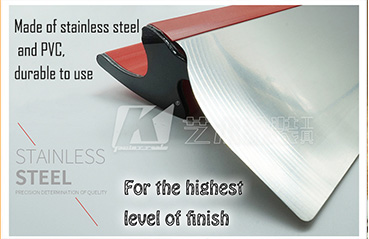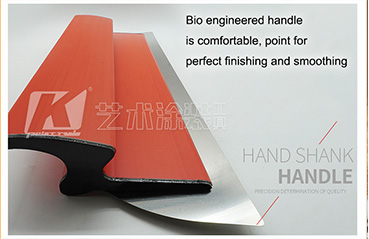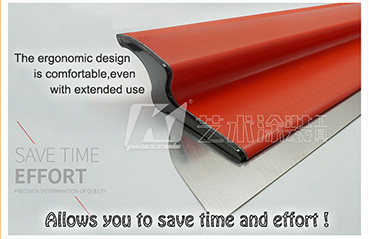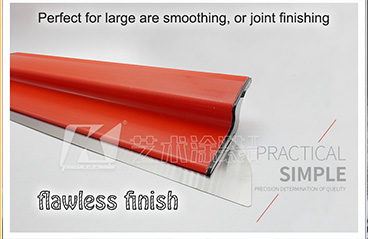Are you looking for the right tools to finish drywall?
The abundance of options available on the market might seem a bit overwhelming at times. So which tools do you actually need to get a decent finishing drywall job done?

Whether you are a DIYer or a professional artist painter, you will need to buy the right tools to finish drywall.But using the right tools can increase the number and quality of jobs you get done.

There are different ways of working: fully or partially by hand or using automatic tools that enable you to work more quickly, easily, and with less physical strain. Drywall finishing comes in different Q or quality levels, depending on the level of smoothness required for the decorative layer that comes on top of the finished surface.

Tools come in all shapes, sizes, and prices. And even when using more advanced or automatic tools, you will always need to keep hold of your manual tool set to finish small spaces and do touch-ups. The distinction between manual, semi-automatic, and fully automatic drywalling is not always very clear.In fact, the K brand drywall skimming spatula is one of the finish drywall tools you need most.

K brand drywall skiming spatula feature advanced engineering and the high-quality #304 stainless steel for superior strength and durability. The secret is the strong but flexible stainless steel blade and the precise fulcrum point designed into the hand grip area. This allows the blade to have up to more contact area with the surface, generating a superior finish,which is used to achieve a professional finish when smoothing and finishing wall-coated drywall compound.
K brand drywall skiming spatula are using new PVC material, which touch feeling is better and more durability. Bio engineered handle is comfortable and establishes a perfect fulcrum point for perfect finishing and smoothing.The ergonomic design is comfortable even with extended use and significantly reduces the wrist strain that is common when using other brand drywall skiming spatula.
Drywall Primer Basics and Application
Bare drywall, where muddy taped seams and fastener holes are still exposed, requires priming before painting.
Drywall absorbs more paint than its fair share. If you don't prepare the surface, you may find yourself applying too many coats of paint before the muddy seams are no longer visible. However, if you prime the surfaces first, you'll likely be able to complete the project with fewer coats of paint, especially if you're crafty enough to tint the primer coat.
Drywall priming is fast, economical and effective. Along with specific drywall primer, there are several other easy ways to prep drywall before painting: matte latex paint, hide paints, and skim coat with drywall compound.
Why Drywall Primer Is Necessary
New and recently finished drywall is difficult to paint directly because the surface features three different textures, each with its own absorption rate.
The Taped And Muddy Seams And Screw Holes Have Been Covered With Drywall Compound (Mud) And Tend To Absorb Paint. The Drywall Is Faced With Paper. Because paper is porous, it absorbs paint.
Over-sanded drywall paper, often in areas near muddy joints, can have a scratchy, fuzzy surface that also tends to soak up paint. The result is that when painting directly over bare, finished gypsum board, these different rates of absorption will produce a mottled and streaked appearance where certain areas are visible, a condition called gloss.
This unevenness only goes away after multiple coats of expensive paint. Depending on the color and gloss of the paint, it may sometimes take three or even four coats before the painted surface is even.
What Does Drywall Primer Do?
Primer Matches Color
Primer equalizes base colors of mud and drywall paper so paint colors placed on top can really shine without interference.
With freshly finished drywall, you will have two base colors: the color of the paper (grey, off-white, or green) and the color of the mud (white or off-white). A coat of primer or even an inexpensive neutral color paint will go a long way to masking these colors. A better quality (thicker) drywall primer, also known as concealing paint, will cover them completely.
Primer Equalizes Porosity
Drywall primer soaks into the paper, scratch paper, and mud (areas of differing porosity) and creates a smooth surface for the finish paint to adhere to.
If you have ever looked at a painted wall from a sharp angle and seen the finished joints showing through, this is an effect called joint banding or flashing. Drywall primer will significantly reduce or completely eliminate that effect.
Paint Primer: Basic Usage Guide
Drywall Primer-Sealer
The most common method of priming drywall is to apply a coat of primer-sealer designed for drywall. Drywall primer-sealers come in both water-based (latex) and oil-based (alkyd) forms.
In addition, you can choose between standard sealers, which are suitable for getting well-finished walls, or high-build primer sealers that can help fill rough or uneven drywall with refinement. High-build products cost a bit more, but may be worth the expense, especially if you're preparing a drywall surface that is rough.
Basic drywall primer-sealers will cost $15 to $20 per gallon, and high build primers will cost considerably more: $40 to $50 per gallon.
To improve their hiding power, primer sealers can be tinted prior to application so that the primer coat more closely matches the finish paint color you have chosen. Paint stores can add pigments to the primer-sealer, sometimes for a small additional fee.
Flat Latex Paint
Using flat latex paint is another inexpensive way to prime drywall before painting. Even professionals sometimes opt for latex paint as a primer when the surface is finished so well that it is perfectly smooth and flawless. Some drywall manufacturers even recommend smooth, flat latex paint as a type of drywall primer.
The cost of a gallon of basic flat latex paint is usually considerably less than that of a high-quality topcoat. As with the primer-sealer, you can tint the flat white latex paint to more closely match the color of the finish.
Hide Paintings
Concealment paints take the flat latex paint concept one step further. This product is still a flat latex paint, but it is slightly thicker and has better color hiding properties than plain latex paint. Be sure to choose a concealing paint that is compatible with unfinished drywall. Hiding paints can cost up to twice as much as regular latex paint.
Skim Coating With Drywall Compound
Skim coating is the process of using a drywall taping knife to scrape away the drywall compound and then immediately removing it. The remaining compound that your knife cannot scrape off is the skim layer. Skim coating is the level five drywall finishing step performed by professional installers to achieve a perfect wall texture.















